Over the past four years we’ve seen two key renewable electricity schemes introduced by the Government. The Micro Generation Support Scheme is designed for smallscale projects, mostly rooftop solar while the Renewable Electricity Support Scheme is designed for large, commercial wind and solar projects.
Many have argued that these schemes offer no opportunity for commercial small-to-medium-scale projects such as one-off wind turbines, small solar farms, large rooftop solar PV systems or biogas plants.
The Government is now aiming to fill this gap with the introduction of the Small-Scale Generation Support Scheme (SSG) later in 2023. The Government believes this scheme could deliver up to 800MW of renewable electricity, the equivalent of around 4,000ac of solar panels.
What we know so far
A public consultation to shape the design of the scheme took place last year and the responses are currently being reviewed. While the scheme’s design is still being finalised, there are a number of details we know.
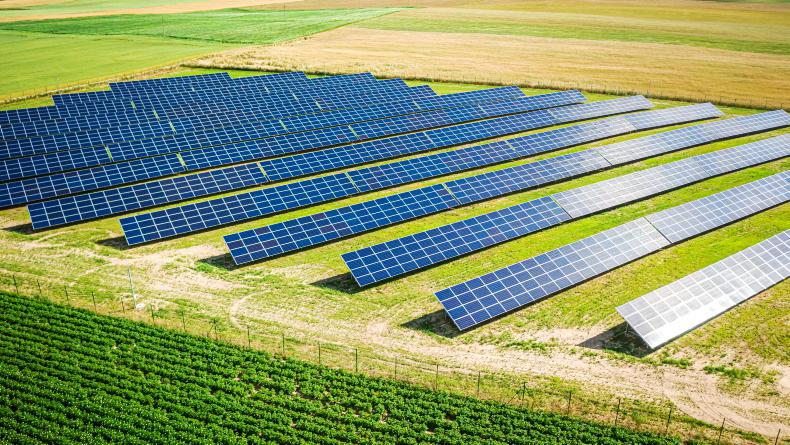
Farmers may be able to develop small scale solar farms under the new scheme
It will be open to businesses, community groups and farms. However, the Department of the Environment, Climate and Communications believes the scheme will play a key role in diversifying farm incomes as we meet our climate targets.
“Recognising the critical role that the agriculture sector has in reducing greenhouse gas emissions over current and future carbon budget periods and the need to provide alternative income streams to farmers, the SSG will provide support for farms across the country,” the consultation reads.
“This is likely to cover both on-farm demand for high-demand farms (such as pig/poultry farms) in some cohorts and export opportunities in areas of high local demand or where the electricity network can accommodate this,” it says.
Scale and technologies
The SSG will provide support to develop projects between 50kW and 6MW in output. Projects which are designed exclusively for exporting electricity must be over 1MW in output while projects below this can either use the electricity on farm and export it.
The Department say (it) that a wide range of renewable electricity technologies will be eligible for the scheme:
Onshore wind projects.Solar PV – rooftop and ground-mounted.Hybrid wind and solar – projects that use both onshore wind turbines and solar technology.Hybrid wind and storage – projects that use onshore wind turbines together with storage such as batteries.Hybrid solar and storage – projects that use solar technology together with storage, such as batteries.Hydro.High-efficiency combined heat and power (HECHP) boilers fuelled exclusively by waste.Biomass fuelled HECHP.Biogas fuelled HECHP.The Department says this list will be reviewed periodically and will be amended to take account of future developments.
It remains unclear if the rates of support will be the same for all technologies or if there will be different rates depending on the specific technology.
This will have a big bearing on the feasibility of certain technologies for the scheme. For example, electricity produced from biogas is considerably more expensive than solar and will need higher levels of support.
The Department believes solar PV will be the most common type of technology to avail of the scheme due to its relatively low cost and ease of installation.

Wind turbines will be eligible for support under the scheme
In the case of farms, this scheme may finally allow farmers to fully utilise their shed roof space by installing a larger solar PV system (above 50kW or 350m2 of panels) with the aim of exporting the electricity to the grid.
Support mechanism
The current wholesale price of electricity remains high and this will likely continue into at least 2024. However, short-term high electricity prices are not enough to give a farmer or investor the confidence to develop a renewables project, the development costs of which could be in the hundreds of thousands.
The Department understand this and has confirmed to the Irish Farmers Journal that the scheme will provide financial support to a project in the form of a floating feed-in-premium (FIP) which will deliver a rate of return on investment of 6%.
FIPs work in a similar way to conventional tariffs but instead of a guaranteed standard payment, farmers receive a premium on top of the market price of their electricity. In other words, the farmer will sell their electricity through the grid and receive a top-up from the Government to ensure they get that rate of return. This means the level of top-up changes depending on the current wholesale market price of electricity.
The Department has also confirmed that the level of support will gradually reduce to zero over the lifetime of the scheme.
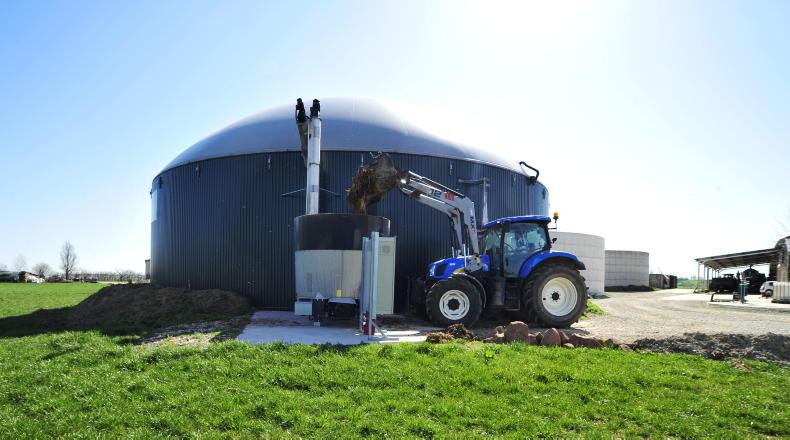
Biogas to combined heat and power plants will be eligible for support under the scheme
This clause isn’t included in the Government’s larger renewable electricity scheme and could be a disincentive to investment for farmers.
The Department has also confirmed that there will likely be an in-built clawback mechanism in the scheme, where farmers pay back to the electricity customers during times of high wholesale electricity prices.
The Department says that, due to its flexibility, this approach offers a low risk of over-payment to the project developers.
Cost of scheme
The scheme is likely to be funded from the Public Service Obligation levy which is a subsidy charged to all electricity customers in Ireland. The overall cost of his scheme to the taxpayer is heavily dependent on wholesale electricity prices. Depending on the electricity price and level of uptake, the scheme could cost between €7.07m to €238.32m the consultation states.
Opening window
The Department states that the scheme will run for eight years, from 2023-2030 allowing projects to secure funding during that time. The FIP would then be provided for a period of 15 years.
Grid connection
Arguably the biggest challenge of this scheme is the ability of farmers to secure an appropriate grid connection to export electricity to the grid. Having a grid connection offer in place will be a requirement of the scheme as well as having planning permission where applicable.
The Department has tasked ESB Networks with developing a streamlined connection process for small-scale projects and farmers can check the network’s available capacity using the ESB’s heat map at www.esbnetworks.ie/network-capacity-map.
Over the past four years we’ve seen two key renewable electricity schemes introduced by the Government. The Micro Generation Support Scheme is designed for smallscale projects, mostly rooftop solar while the Renewable Electricity Support Scheme is designed for large, commercial wind and solar projects.
Many have argued that these schemes offer no opportunity for commercial small-to-medium-scale projects such as one-off wind turbines, small solar farms, large rooftop solar PV systems or biogas plants.
The Government is now aiming to fill this gap with the introduction of the Small-Scale Generation Support Scheme (SSG) later in 2023. The Government believes this scheme could deliver up to 800MW of renewable electricity, the equivalent of around 4,000ac of solar panels.
What we know so far
A public consultation to shape the design of the scheme took place last year and the responses are currently being reviewed. While the scheme’s design is still being finalised, there are a number of details we know.

Farmers may be able to develop small scale solar farms under the new scheme
It will be open to businesses, community groups and farms. However, the Department of the Environment, Climate and Communications believes the scheme will play a key role in diversifying farm incomes as we meet our climate targets.
“Recognising the critical role that the agriculture sector has in reducing greenhouse gas emissions over current and future carbon budget periods and the need to provide alternative income streams to farmers, the SSG will provide support for farms across the country,” the consultation reads.
“This is likely to cover both on-farm demand for high-demand farms (such as pig/poultry farms) in some cohorts and export opportunities in areas of high local demand or where the electricity network can accommodate this,” it says.
Scale and technologies
The SSG will provide support to develop projects between 50kW and 6MW in output. Projects which are designed exclusively for exporting electricity must be over 1MW in output while projects below this can either use the electricity on farm and export it.
The Department say (it) that a wide range of renewable electricity technologies will be eligible for the scheme:
Onshore wind projects.Solar PV – rooftop and ground-mounted.Hybrid wind and solar – projects that use both onshore wind turbines and solar technology.Hybrid wind and storage – projects that use onshore wind turbines together with storage such as batteries.Hybrid solar and storage – projects that use solar technology together with storage, such as batteries.Hydro.High-efficiency combined heat and power (HECHP) boilers fuelled exclusively by waste.Biomass fuelled HECHP.Biogas fuelled HECHP.The Department says this list will be reviewed periodically and will be amended to take account of future developments.
It remains unclear if the rates of support will be the same for all technologies or if there will be different rates depending on the specific technology.
This will have a big bearing on the feasibility of certain technologies for the scheme. For example, electricity produced from biogas is considerably more expensive than solar and will need higher levels of support.
The Department believes solar PV will be the most common type of technology to avail of the scheme due to its relatively low cost and ease of installation.

Wind turbines will be eligible for support under the scheme
In the case of farms, this scheme may finally allow farmers to fully utilise their shed roof space by installing a larger solar PV system (above 50kW or 350m2 of panels) with the aim of exporting the electricity to the grid.
Support mechanism
The current wholesale price of electricity remains high and this will likely continue into at least 2024. However, short-term high electricity prices are not enough to give a farmer or investor the confidence to develop a renewables project, the development costs of which could be in the hundreds of thousands.
The Department understand this and has confirmed to the Irish Farmers Journal that the scheme will provide financial support to a project in the form of a floating feed-in-premium (FIP) which will deliver a rate of return on investment of 6%.
FIPs work in a similar way to conventional tariffs but instead of a guaranteed standard payment, farmers receive a premium on top of the market price of their electricity. In other words, the farmer will sell their electricity through the grid and receive a top-up from the Government to ensure they get that rate of return. This means the level of top-up changes depending on the current wholesale market price of electricity.
The Department has also confirmed that the level of support will gradually reduce to zero over the lifetime of the scheme.

Biogas to combined heat and power plants will be eligible for support under the scheme
This clause isn’t included in the Government’s larger renewable electricity scheme and could be a disincentive to investment for farmers.
The Department has also confirmed that there will likely be an in-built clawback mechanism in the scheme, where farmers pay back to the electricity customers during times of high wholesale electricity prices.
The Department says that, due to its flexibility, this approach offers a low risk of over-payment to the project developers.
Cost of scheme
The scheme is likely to be funded from the Public Service Obligation levy which is a subsidy charged to all electricity customers in Ireland. The overall cost of his scheme to the taxpayer is heavily dependent on wholesale electricity prices. Depending on the electricity price and level of uptake, the scheme could cost between €7.07m to €238.32m the consultation states.
Opening window
The Department states that the scheme will run for eight years, from 2023-2030 allowing projects to secure funding during that time. The FIP would then be provided for a period of 15 years.
Grid connection
Arguably the biggest challenge of this scheme is the ability of farmers to secure an appropriate grid connection to export electricity to the grid. Having a grid connection offer in place will be a requirement of the scheme as well as having planning permission where applicable.
The Department has tasked ESB Networks with developing a streamlined connection process for small-scale projects and farmers can check the network’s available capacity using the ESB’s heat map at www.esbnetworks.ie/network-capacity-map.








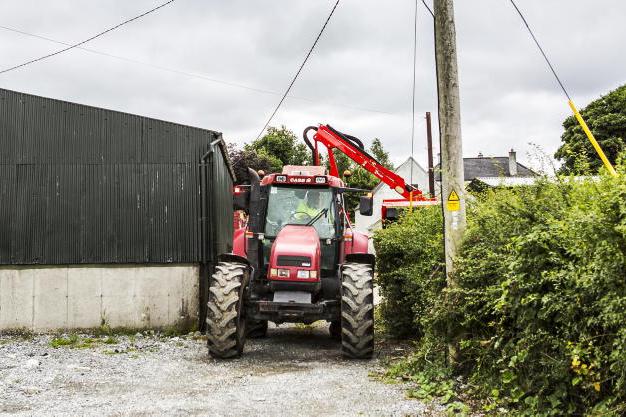

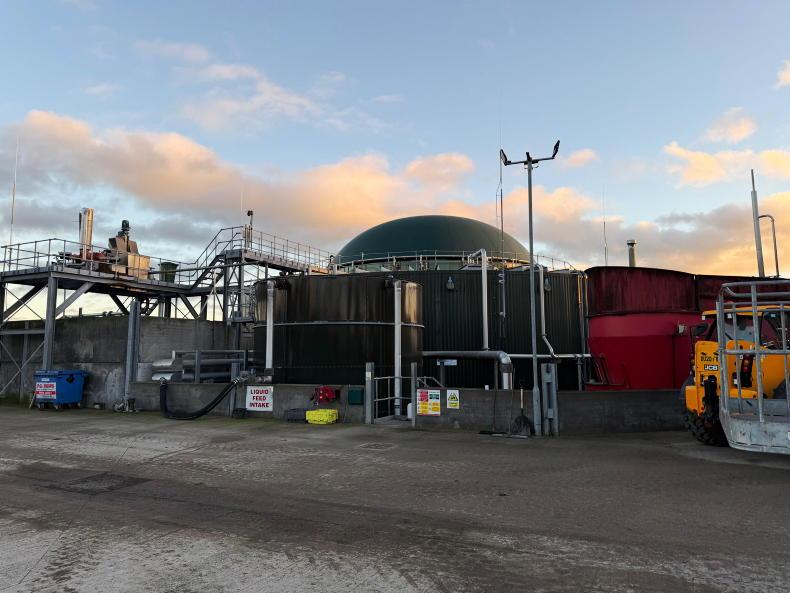
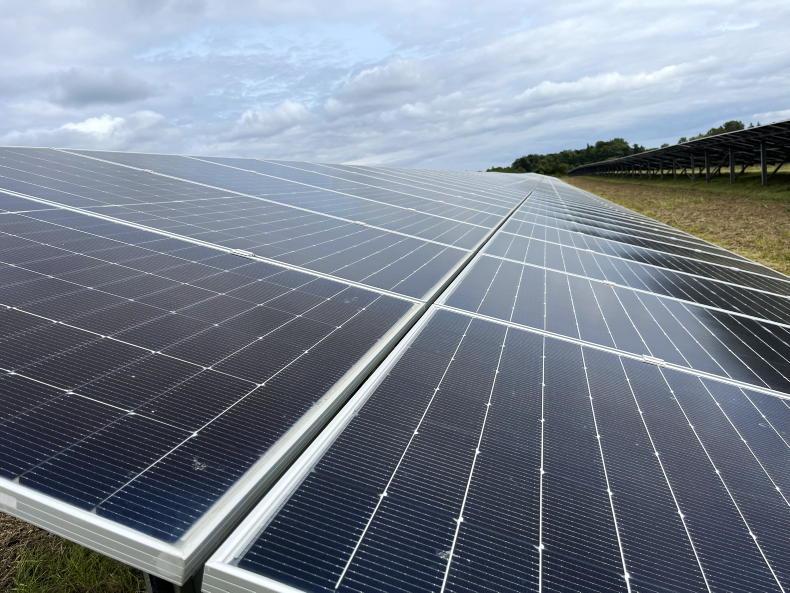
SHARING OPTIONS